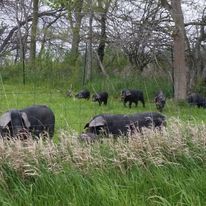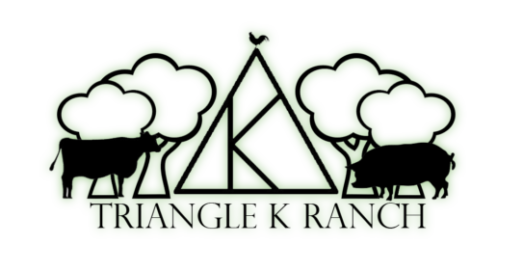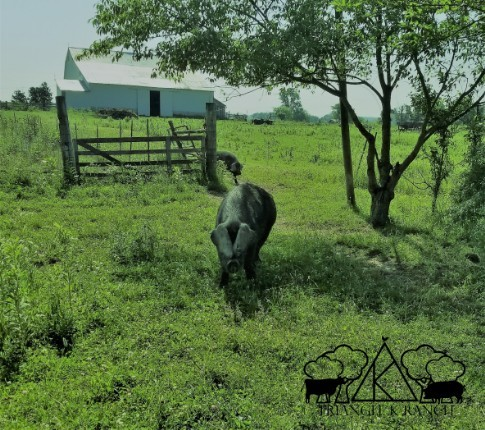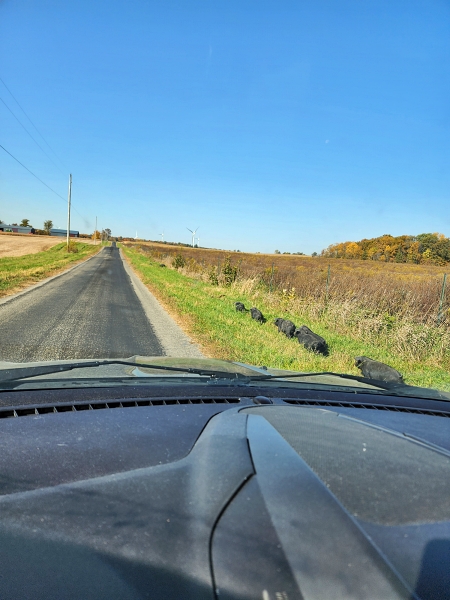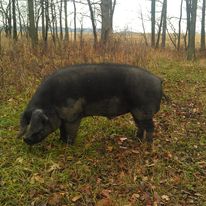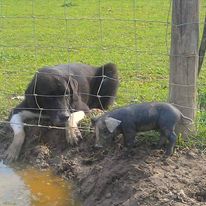Barn
Around the Ranch
A Bit Of History
on
Large Black Hogs
If you had a large, black pig, what name would you give it? Well, when the first breed society was developed in England, they decided to keep it simple and called them “Large Black” hogs. They became very popular on small farms because they were docile, easy to keep and got much of their nutrition from the grass and forage provided by nature.
Originally there were two distinct breeds in England; one in the east and the other in the west. One had dense, long hair and the other had short, thin hair. Today’s pigs show both traits even within the same litter. The hogs were imported into the United States early in the twentieth century and did well on a number of farms. However, in the 1960s when the pork market started to favor leaner, lighter colored meat the marbled pork of the Large Black fell out of favor. By the 1990's the Large Black pig had become critically endangered. Today it is listed as “Vulnerable” by England’s Rare Breeds Survival Trust and “Critical” by The Livestock Conservancy.
Large Black Hogs by Handsome Husband
They have great big ears and little bitty eyes.
They are kind of fun to be around because they don't tell lies.
They are safe for your kids and they won't eat your wife.
Taking care of them is livin' the good life.
Now other breeds grow faster, and they are more popular too.
But we find the Large Blacks are the tastiest and you'll say it is true.
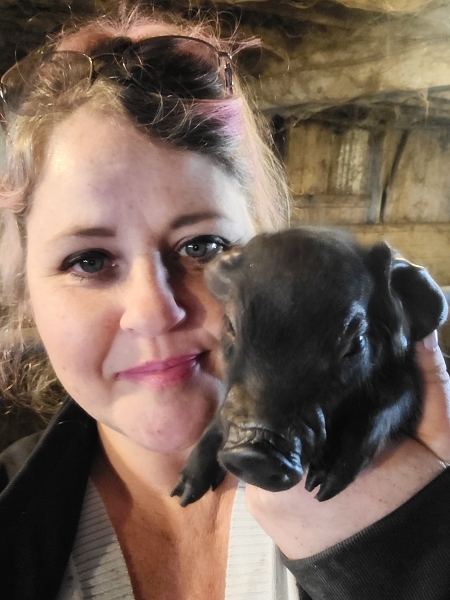
There was a farm south of Jumbo
that raised every kind of animal we know.
chickens pigs and cats too.
The owners had allergies and always said achoo!
the wind howled and roared.
The weather was wet.
The dog stood in the doorway and began to sweat.
He had to pee really, really bad
and if he went in the house, he knew they'd be mad.
So he lowered his head and he slunk out the door
trying to find a dry corner and more.
As quick as a wink he was back in the house,
cursing the weather and snug as a louse.
~Handsome Husband
The evening is still, sound carries from what seems miles to my chilly ears. I stand quiet, listening to the song of the woods. An occasional dog barks, a tire over gravel, the soft chirp of a bird. I am checking fence lines, making sure all is right. I have found the section Max walked over. He came straight to the house to alert me, then followed me back and into the fence grunting happily as he lumbered along. Everyone is safe in the barn for the night. As dusk falls and I am still standing listening to the woods I hear the whisper of of night creatures stirring. Deer bed down for their slumber and the trees say 'Goodnight'. Peaceful.
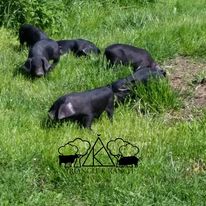
We have most of our animals processed at Link's Country Meats in Crestline, Ohio.
We have found that their handling is excellent.
Some of the things that you may find in their repertoire are:
Brats: Cajun (my favorite), Jalapeno, Cheese, Cheese and Bacon and Plain
Sausages: Mild or Sweet Italian
Pork chops at whatever thickness you wish.
Any of these can be smoked!
Our favorite bacon is Peppered Jowl bacon.
There were merely 273 Large Blacks in the United States in 2019. The blood lines for males are Longfellow, Defender, Super, Super-CA, Super-UK, Noble Sam, Iowa Alrose, Majestic and Malcolm. The blood lines for females are Warbler, Prudence, Charlotte, Matilda and Daisy. We have a Malcolm boar. Our females are Prudence x 2, Charlotte x 2. We have worked with Purdue University and the Livestock Conservancy on a project to protect the genetics and introduce 3 new boars to the Large Black bloodlines. We have been and will continue to work with this project for several years yet.
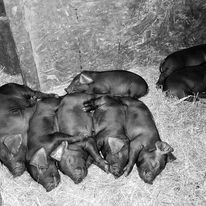
We had begun a search for rare and old books on animal husbandry, Large Black
Pigs, swine processing and breeding more than a decade ago. We are gleaning the
information about our beloved Large Black’s heritage. One quote was the origins of the
Large Black Pig has been lost to oblivion. We want to inform our members with what
knowledge there is. We will update the history of the Large Black as we discover
information that has been lost. Our endeavor here is to inform and educate about this
amazing breed. You will see quotes from other Breeders and Authors about these pigs.
We are the owners of Large Black Pig Breeders United along with Kelly Luzier of Fur Immer Farm, also a former board member/Treasurer of the LBHA.
I am a consultant with the Swine Medical Database. This is a searchable database about illness and injuries associated with Heritage Swine.
We are current members of The Livestock Conservancy.
I am the former Registrar/Secretary of the Large Black Hog Association. I held the position since 2011-2021. I retired briefly in 2018 and left the position permanently in November 2021.
We have been raising Large Blacks since 2009.
